|
THE DISAPPEARANCE OF AIRPORT OBSERVATION DECKS
Even though flying has become a very common phenomenon, people of all ages still love to come to the airport to watch aircraft and enjoy the airport atmosphere. There was a time when most major airports offered an outdoor viewing terrace or observation deck. From the 1970s onward, most of them were closed due to security concerns or to make way for terminal expansion. There's a few notable exceptions left. Even though it is a fraction of its former size, Amsterdam Schiphol's "Panorama Terrace" is still a fantastic venue. Many airports in Germany and Japan also offer excellent viewing facilities. In this blog post we take you back to ten super cool airport viewing terraces and decks, some of which are still around today! Don't forget you can click on the images to expand.
1. Zurich Dübendorf & Kloten Airport
The viewing terrace of Zurich Dübendorf Airfield in 1946. Dübendorf functioned as Zurich's main airport between 1919 and 1948.
Zurich Kloten Airport's viewing terrace sometime during the 1960s.
2. Los Angeles International Airport
The Theme Building was the symbol of LAX's new Jet-Age terminal complex. Opened in 1961, it featured a restaurant and an observation deck with sweeping, unobstructed views of the airport and its surroundings. At present, the Theme Building is closed for the public.
3. Frankfurt Airport
The outdoor restaurant at Frankfurt Airport, sometime during the 1950s.
Opened in 1972, Frankfurt's Terminal 1 had an absolutely fantastic observation deck on top of the two star-shaped concourses (Flugsteig B), offering great views of all the action.
The deck was closed in 2006 in order built a new floor on top of the existing structure. There's still is a viewing terrace on top of nearby Terminal 2, but the views are inferior to those offered by T1. Read more about Frankfurt's Terminal Mitte here.
4. Nairobi Embakasi Airport
The observation deck at Nairobi's Embakasi Airport, now Jomo Kenyatta International Airport, sometime during the late 1960s.
In 1978, passenger traffic was moved to a new new complex on the far side of the airport. No new viewing facilities were provided.
5. Hong Kong Kai Tak Airport
Hong Kong's Kai Tak's 1962 passenger terminal featured an excellent observation deck. The deck closed in the early 1970s due to terminal expansion.
Want more stunning airport photos & stories?
Sign up to our newsletter below to know when new content goes online!
6. Amsterdam Schiphol Airport
Amsterdam Schiphol has a long tradition of catering to visitors, as is evident in this 1950s image.
Schiphol's new passenger terminal, opened in 1967, photographed from the platform tower. In the early days, Schiphol's "Panorama Terrace" stretched out onto Pier D (then Pier B).
Visitors watching 1970s ramp action. I hope these people realized how good they had it!
Another great 1970s view of the Panorama Terrace. The section on top of Pier D was closed in the late 1970s, arguably for security reasons.
And yet another nostalgic shot of the Panorama Terrace at Amsterdam Schiphol Airport in the late 1970s. Over the years, large sections of the terrace were closed. This particular stretch is no longer accessible, but at least the terrace is still there.
See more vintage images of Schiphol here or read about the airport's notorious runway in the middle of nowhere here.
Like this article?
Please consider supporting us with a simple donation!
Your support will help us protect & preserve the heritage of the world's great airports.
7. London Heathrow Airport
The viewing terrace on top of the Queen's Building at Heathrow in 1957.
Spectators admire a BEA Vickers 806 Viscount on a beautiful summer day in 1969.
The terrace closed in the 1970s due to the threat of terrorist attacks by the IRA. Read about Heathrow's original development plan here.
8. Miami International Airport
The observation deck of Miami International Airport, photographed in the early 1960s. In the early 1970s this section was closed to make way for an automated people mover system, connecting the terminal with the new international satellite at the end of the pier.
Luckily, the new satellite building boasted a viewing deck as well. However, it closed in the late 1980s.
9. Düsseldorf International Airport
The observation deck on top of Düsseldorf International Airport's Pier B. In 1996, a fire destroyed part of the terminal, and major rebuild followed. The observation deck was maintained but has been closed since the Covid pandemic.
Read more about Düsseldorf's proposed super airport here.
10. Melbourne Tullamarine Airport
Melbourne Tullamarine Airport's passenger terminal (1970) also featured an excellent observation deck overlooking the international concourse. The deck was closed in the early 2000s.
Interestingly, in November 2005 it was reopened for a few days for the promotional visit of the Airbus A380 prototype.
Bonus: Berlin Tegel Airport
Berlin Tegel Airport's 1974 passenger terminal featured an excellent observation deck along its entire length. It remained open until Tegel's closure in 2020.
We want to close with a call to airports around the world:
In a time when there is a growing resistance to aviation, we think it makes sense to take good care of the people that still support you (and gain a few more enthusiasts in the process!). Thus, bring back those terraces and aircraft spotter locations! Airports like AMS, FRA, and many others prove it can be done so safely and securely. In addition, most people are happy to pay a few bucks for entering such facilities and they will likely buy food and drink at the airport as well. Thus, also from a financial point of view it makes sense! Which airport observation deck is or was your favorite? Tell us in the comments below!
Like this article?
Please consider supporting us with a simple donation!
Your support will help us protect & preserve the heritage of the world's great airports.
6 Comments
On May 16, 1992, Munich's Riem Airport closed after 53 years, to be replaced by the city's brand-new "Franz Joseph Strauss International Airport." In today's blog post, we revive Riem's memory with some amazing images from the period 1972-1992! A 1980s airside view of Riem Airport's terminal building, featuring a couple of Lufthansa classic jets. Many older Munich-based "Lufthanseaten" remember the characteristic airport with great affection. Construction of Riem began in 1937. The airport was put in operation on October 25, 1939, when the first civilian flight , a Lufthansa Junkers Ju 52/3m arrived from Berlin. A 1988 aerial of Munich Riem, looking northeast. From this view it is apparent that the airport did not have any room to expand and the search for a new airport kicked off as early as 1963. In 1969, runway 07R/25L was lengthened to its final length of 2,804 meters (9,199 feet). Pan Am Boeing 747-121 "Clipper Midnight Sun," photographed visting Riem sometime during the late 1970s/early 1980s. A 1980s landside view of the passenger terminal. The building was designed by German architect Ernst Sagebiel, who also designed Berlin Tempelhof, Dresden, and Stuttgart, which were being built at the same time. A 1970s view of the check-in area. How cool that back then you could open a window for some fresh air! A mid-1970s aerial of Riem's terminal complex. In 1971, a DM 36 million expansion was completed, doubling the airport's capacity to 7 million annual passengers and readying the airport for the influx of visitors during the Summer Olympics of 1972. The expansion included six gates equipped with boarding bridges, which were still pretty much a rarity at airports in Europe at the time. British Airways Concorde with the registration G-BOAD during a visit to Riem on August 10, 1983. Want more stunning airport photos & stories?
Sign up to our newsletter below to know when new content goes online! An undated view of one of the gate holding lounges. An aerial taken on on 21 March 1973. This was the day of the European Champions' Cup quarter finals between Ajax Amsterdam and FC Bayern, which brought a large number of football charters to the airport. Visitors include a KLM DC-8 and DC-10. A busy apron scene in the late 1980s. Visitors include a Boeing VC-137C United States Air Force aircraft, one of two customized Boeing 707s, which were specifically configured and maintained for use by the president of the United States. An airside view of the terminal building taken a few days after the closure of Riem. In 1991, its final full year of operation, 10.8 million passengers were handled. After closure, Riem was redeveloped into an office and convention area. This aerial view looks west toward Munich. Thankfully, Riem's air traffic control tower has been preserved and is now part of the corporate headquarters of Brainlab AG, a Munich-based technology company. The company rents out the tower as an event space. Better still, the tower cabin contains a bar. Now that's the way to do preservation, folks! For more information and images follow this link. Bonus: It's movie time! A cool 1992 video about Riem's history and closure. Also briefly covers the new airport. It's in German, but there's lots of cool footage! Credit: Flughafen München GmbH. Another, longer 1992 documentary on Riem's history, closure, and the new airport. In German but well worth the footage! Credit: Flughafen München GmbH. Did you travel through Riem Airport? What was the experience like? Share your impressions in the comments below! More airport articles: Click here Want more stunning airport photos & stories?
Sign up to our newsletter below to know when new content goes online!
During our recent digs in the AirportHistory.org archives we unearthed a very interesting 1980 British Airways brochure advocating for the construction of a fifth terminal at Heathrow, which could be ready as early as 1989.
Interestingly, permission to build Terminal 4 had just been given the year prior and construction hadn't even started. So, how come British Airways was already lobbying for the next terminal, complete with artist's impressions? Was BA simply extremely forward-looking, considering the long lead time in the UK to build large airport projects? Find out the answer below!
THE NEED FOR CAPACITY
By the early 1970s, serious doubts had arisen about the necessity for a new London airport in the Thames Estuary, 45 miles (70 kilometers) east of Central London. As a result, the focus shifted back to providing additional capacity at existing airports. At the time, the maximum capacity of Heathrow's three terminals was thought to be 30 million annual passengers. Traffic forecasts indicated that there would be a capacity shortfall between 1982 and 1986.
TWO OPTIONS FOR TERMINAL 4
The immediate priority was to build a new Terminal 4 at Heathrow, where pressure was greatest. Planning work started in 1973. One option was to develop the site of the Perry Oaks sludge works on the western side of the airport, where a terminal with a capacity of 15 million passengers could be provided. The site was located between the main runways, decreasing aircraft taxi times. It could be easily connected to the M25 Orbital Motorway, which was being built at the time.
Want more stunning airport photos & stories?
Sign up to our newsletter below to know when new content goes online
The other option was to build a much smaller terminal with a capacity of 8 million annual passengers on a 70-hectare site southeast of the airport.
For obvious reasons, the Perry Oaks alternative was heavily backed by British Airways, which has its home base at Heathrow Airport. However, the Perry Oaks option was ruled out because of the lead time involved in clearing the site, which was believed to be several years. Thus planners chose the southeast site, it being the only site where a new terminal could be built in time before existing capacity limits were reached in the mid-1980s.
In December 1979, the UK government approved the construction of Terminal 4. The terminal, which was to be used for British Airways long-haul flights, would raise the airport's capacity to 38 million annual passengers, which was considered the absolute maximum the airport could handle.
All further future growth was to be channeled through an expanded Stansted Airport, located 42 miles (67 kilometers) northeast of Central London. Obviously, the prospect of having to split its traffic over multiple airports was not an attractive one to British Airways. Thus, soon after the decision to built Terminal 4 was taken, the airline published the aforementioned brochure, arguing for the development of Heathrow beyond Terminal 4 with a fifth terminal. It could readily present the Perry Oaks plans developed previously.
WHAT HAPPENED AFTER
Built at a cost of GBP 200 million, Terminal 4 was opened by the Prince and Princess of Wales on April 1, 1986. Planning studies for Terminal 5 got underway soon after in February 1988. BAA formally announced its proposal for construction of Terminal 5 in May 1992, submitting a formal planning application on February 17, 1993. T5 was inaugurated on March 14, 2008 and is now the home base of British Airways. In 2019, Heathrow handled almost 81 million passengers, more than twice the amount planners thought Heathrow was capable of back in the 1970s!
If Terminal 4 had been built at the Perry Oaks site, how would Heathrow have developed later on? Let us know your thoughts in the comments below!
Did you know that plans to build additional runways at Heathrow date back all the way to 1946? You can read that story here. A special thanks to Heathrow expert Kevan James. Check out his website here.
More airport articles: Click here
Add the Terminal 5 brochure to your airport collection!
Click the images below to purchase a high-quality digitized copy of this 26-page public information brochure, a must-have for airport history fans!
Want more stunning airport photos & stories?
Sign up to our newsletter below to know when new content goes online
Nuestros fans de Sudamérica nos envían con frecuencia mensajes en los que nos critican por descuidar los aeropuertos de su hermoso y sorprendente continente. Tienen razón, por supuesto, y hoy, ¡vamos a empezar a corregir el registro!
En lo más profundo de la bóveda de AirportHistory.org, hemos encontrado recientemente el Plan Maestro de 1969 del Aeropuerto Internacional de Maiquetía "Simón Bolívar", la principal puerta de entrada internacional de Venezuela. A mediados del siglo XX, Venezuela era un país petrolero en auge. Con el rápido crecimiento del transporte aéreo y la abundancia de dinero, el gobierno planificó un enorme proyecto de expansión, que sólo se ejecutó parcialmente. ¿Tiene curiosidad por saber lo que los planificadores tenían originalmente en mente para el futuro de Maiquetía? Sin más preámbulos, ¡echemos un vistazo!
UNA BREVE HISTORIA
Conocido originalmente como Aeropuerto de La Guaira, el aeropuerto fue construido en 1930 por Pan American Airways. Para 1949, contaba con una pista de 1.524 metros, que posteriormente se amplió a 3.000 metros. El edificio original de la terminal, hacia el extremo oriental del aeropuerto, se inauguró en 1948. Esta vista aérea de 1948 de lo que entonces se llamaba Aeropuerto de La Guaira, muestra la pintoresca ubicación del aeropuerto en la orilla del mar.
PLAN MAESTRO
En 1970, Maiquetía atendía a 1,47 millones de pasajeros, lo que lo convertía en el tercer aeropuerto más activo de Sudamérica, después de los aeropuertos de Bogotá-El Dorado y São Paulo-Congonhas. Desde su fundación en 1960, VIASA, la aerolínea nacional de Venezuela, se había convertido rápidamente en una de las principales compañías aéreas de Sudamérica, conectando ciudades de Sudamérica, Norteamérica y Europa. La aerolínea necesitaba un aeropuerto de origen que pudiera acomodar sus ambiciones de crecimiento. En 1968, el gobierno contrató los servicios de la renombrada firma Tibbetts-Abbott-McCarthy--Stratton (TAMS) para preparar los planes para el futuro desarrollo de Maiquetía.
¿Sabías que?
Uno de los expertos encargados del proyecto del Plan Maestro de Maiquetía fue Walther Prokosch, el arquitecto que dirigió el diseño de la terminal de Pan Am en el aeropuerto JFK y el Plan Maestro del aeropuerto DFW.
NUEVAS PISTAS
Los estudios de tráfico preveían que Maiquetía manejaría 30 millones de pasajeros en el año 2000, 20 veces más que en 1970, por lo que se requería una ampliación radical del aeropuerto. Los planificadores previeron una ampliación a gran escala del aeropuerto hacia el oeste con dos nuevas pistas y un nuevo complejo de terminales de pasajeros. En primer lugar, se construiría una nueva pista 09/27 de 11.483 pies (3.500 metros) entre la pista original 08/26 y el mar. Su construcción implicaría el movimiento de 650 millones de pies cúbicos de tierra. La pista se puso en marcha en 1975. Más adelante, se construiría una segunda pista de 215 metros al norte y al oeste de la pista 09/27. Tendría una pista de rodaje de longitud completa y su construcción implicaría la eliminación de una serie de colinas junto a la orilla. La pista debía estar terminada a principios de los años 80, tras lo cual probablemente se cerraría la pista original 08/26.
TERMINALES
En los planos de distribución definitivos, los planificadores prevén una serie de edificios terminales de pasajeros construidos a lo largo de una carretera principal. Al norte habría cuatro módulos terminales para los vuelos internacionales. En el lado sur, el de la montaña, habría un edificio terminal alargado para los vuelos nacionales. En total, habría 48 puertas servidas por puentes de embarque de pasajeros : 24 puertas internacionales y 24 puertas nacionales. Los lados internacional y doméstico estarían conectados por edificios en la mediana de la carretera dorsal, que contendría espacios comerciales. Habría espacio para el estacionamiento de 2800 automóviles. El complejo era demasiado pequeño para justificar una plataforma automatizada de transporte de personas, pero se dejó espacio en el diseño para construirla eventualmente si fuera necesario.
¿Quiere más fotos e historias impresionantes de aeropuertos?
Suscríbase a nuestro boletín de noticias para saber cuándo se publican nuevos contenidos.
DESARROLLO POR FASES
En un principio, todo el desarrollo tendría lugar en el lado norte, con terminales de pasajeros separadas para el tráfico internacional y nacional, que se inauguraron en 1978 y 1983 respectivamente. Las terminales contaban con vestíbulos de embarque a lo largo de la terminal. Más adelante sería posible añadir muelles perpendiculares, aumentando el número de puestos de contacto. En este momento, no está claro si se mantuvo la idea de una terminal doméstica sur a largo plazo o si se eliminó del Plan Maestro desde el principio. ¡Déjenos un comentario abajo si sabe la respuesta!
CRECIMIENTO MÁS LENTO
A lo largo de las décadas, el crecimiento del tráfico fue mucho más lento de lo previsto. Nunca se alcanzaron los 30 millones de pasajeros que se habían proyectado a finales de los años 60. El récord se sitúa en 12,18 millones de pasajeros en 2013, tras lo cual la economía entró en caída libre. Como consecuencia, el Plan Maestro solo se aplicó parcialmente. La pista paralela 09/27 nunca se construyó. Tampoco se añadieron terminales de pasajeros adicionales. En cambio, a principios de la década de 2000, se amplió y remodeló la terminal internacional existente. La terminal nacional no se ha modificado, sólo se ha dotado de nuevos puentes de embarque acristalados. 
Una imagen aérea de la terminal internacional tomada tras la ampliación y remodelación de principios de la década de 2000. El edificio de la administración del aeropuerto y la terminal doméstica son visibles en el fondo. Obsérvese también la construcción en la explanada de la terminal. Iba a ser un hotel de aeropuerto, pero nunca se terminó.
El Plan Maestro de Maiquetía de 1968 es el testimonio de una época en la que el cielo era literalmente el límite para Venezuela. ¡Esperemos que estos tiempos vuelvan algún día!
¿Qué opina de los planes originales para Maiquetía? Háganoslo saber en los comentarios más abajo.
Este artículo ha sido traducido por Gianfranco Perticara. Puede encontrar la versión en inglés aquí. For the English version, click here.
¿Quiere más fotos e historias impresionantes de aeropuertos?
Suscríbase a nuestro boletín de noticias para saber cuándo se publican nuevos contenidos.
Para la versión en español, haga clic aquí
Our fans in South America frequently send us messages requesting we don't neglect the airports on their beautiful and amazing continent. They are right of course, and today we will start correcting the record!
Deep in the AirportHistory.org vault, we recently found the 1969 Master Plan for Maiquetía "Simón Bolívar" International Airport, the main international gateway for Venezuela. In the mid-20th century, Venezuela was a booming oil country. With air travel rapidly growing and money being plentiful, the government planned for a huge expansion project, which was only partially implemented. Curious about what the planners originally had in mind for the future of Maiquetía? Without further ado, let's take a look!
A SHORT HISTORY
Known originally as La Guaira Airport, the airport was constructed in 1930 by Pan American Airways. By 1949, it had a 5,000-foot (1,524-meter) runway, which was later extended to 9,842 feet (3,000 meters). The original terminal building, toward the eastern end of the airport, was opened in 1948.
MASTER PLAN
By 1970, Maiquetía was handling 1.47 million passengers, making it the third busiest airport in South America, after Bogota El Dorado and São Paulo Congonas airports. Since its founding in 1960, VIASA, Venezuela's national airline, had quickly developed into of South America's premier airlines, connecting cities in South America, North America, and Europe. The airline needed a home airport that could accomodate its growth ambitions. In 1968, the government engaged the services of the renowned firm Tibbetts, Abbott, McCarthy, and Stratton (TAMS) to prepare plans for Maiquetía's future development.
Did you know?
One of the experts in charge of the Maiquetía Master Plan Project was Walther Prokosch, the architect who led the design of the legendary Pan Am terminal at JFK Airport and the Master Plan for DFW Airport.
NEW RUNWAYS
Traffic studies projected that Maiquetía would handle 30 million passengers by the year 2000, 20 times more than in 1970, thus requiring a radical expansion of the airport. Planners envisaged a large-scale expansion of the airport to the west with two new runways and a new passenger terminal complex. First, a new 11,483-foot (3,500-meter) runway 09/27 would be built between the original runway 08/26 and the sea. Its consctruction would involve moving 650 million cubic feet of earth. The runway was commissioned in 1975. Later on, a second runway would be built 705 feet (215 meters) to the north and west of runway 09/27. It would have a full length taxiway and its construction would involve the removal of a series of hills beside the shore. The runway was to be completed in the early 1980s, after which the original runway 08/26 would likely be closed.
TERMINALS
In the ultimate layout, planners envisaged a series of passenger terminal buildings built along a spine road. To the north would be four terminal modules handling international flights. On the south side--the mountain side--would be an elongated terminal building handling domestic flights. A total of 48 gates served by passenger boarding bridges would be provided: 24 international gates and 24 domestic gates. The international and domestic sides would be connected by buildings in the median of the spine road, which contained concessions. There would be parking space for 2,800 cars. The complex was too small to justify an automated people mover shuttle but space was left in the design to construct one eventually if needed.
Want more stunning airport photos & stories?
Sign up to our newsletter below to know when new content goes online.
PHASED DEVELOPMENT
Initially, all development would take place on the north side with separate passenger terminals for international and domestic traffic, These opened in 1978 and 1983 respectively. The terminals had boarding concourses running along the length of the terminal. Later on, perpendicular pier could be added, increasing the number of contact stands. At this point, it is unclear if the idea of a south domestic terminal in the long run was retained or if it was dropped from the Master Plan early on. Leave us a comment below if you know the answer!
SLOWER GROWTH
Over the decades, traffic growth was much slower than anticipated. The traffic of 30 million passengers, which had been projected in the late 1960s, was never reached. The record stands at 12.18 million passengers in 2013, after which the economy went into free fall. As a result, the Master Plan was only partially implemented. The parallel runway 09/27 was never built. Also, no additional passenger terminals were added. Instead, in the early 2000s, the existing international terminal was enlarged and re-modelled. The domestic terminal has not been altered, only having been outfitted with new glass-cladded boarding bridges.
The 1968 Maiquetía Master Plan stands testament to a time when the sky was literally the limit for Venezuela. Let's hope these times will return one day!
What are your thoughts on the original plans for Maiquetía? Let us know in the comments below!
More airport articles: click here
Want more stunning airport photos & stories?
Sign up to our newsletter below to know when new content goes online.
During our recent digs in the AirportHistory.org archives we unearthed a fascinating 1972 proposal to massively expand St. Louis Lambert International Airport.
The plan, called the Lambert-St. Louis 2000 Plan envisaged the construction of a third parallel runway and a huge new terminal complex north of the current airport. Let's take a closer look and see what this plan was all about!
BACKGROUND
The Jet-Age travel boom led to an ongoing capacity crisis at St. Louis Lambert International Airport, then called Lambert-St. Louis International Airport. Between 1958 and 1969, the airport's passenger traffic increased almost fourfold. By 1970, Lambert handled 6.6 million passengers, ranking it the 13th busiest in the nation and 20th in the world.
Despite a planned terminal expansion, in 1968, the Federal Aviation Administration (FAA) concluded that Lambert would be unable to accomodate the air traffic demands expected by 1982 and that a replacement airport should be made operational by 1980.
Want more stunning airport photos & stories?
Sign up to our newsletter below to know when new content goes online.
THE COLUMBIA-WATERLOO PLAN
In May 1972, the newly created St. Louis Metropolitan Area Airport Authority, adopted a plan prepared by R. Dixon Speas Associates for a proposed USD 350 million airport to be located near Columbia and Waterloo, 19 miles (30 kilometers) southeast of St. Louis, in the neighboring state of Illinois. In January 1972, the authority applied for USD 8.4 million to begin land acquisition.
THE LAMBERT-ST. LOUIS 2000 PLAN
There was fierce opposition to the plans, among others by the Missouri legislature. It created the Missouri-St. Louis Metropolitan Airport Authority to oppose the Illinois airport plan. In October 1972, the authority unveiled an expansion plan titled the Lambert-St. Louis 2000 Plan, designed to enable Lambert to adequately serve the city's needs until the year 2000. The plan, developed by Wilbur Smith & Associates, called for adding 800 acres to the airport, building a new parallel northwest-southeast runway north of the McDonnell Douglas facilities at Lambert and constructing a new ninety-gate terminal building on the northeast side of the airport.
The Lambert-St. Louis 2000 Plan carried a USD 370-million price tag, including USD 75 million for land acquisition, USD 75 million for the new terminal, and USD 30 million for the new runway and taxiways.
The runway would provide the FAA-required spacing to permit simultaneous instrument landings, which Lambert's configuration did not allow. Improvements under the plan would allow Lambert to handle 60 million passengers annually. SUPPORT The plan contains many letters of support, including from: US, state, and local officials; Ozark Airlines, which had its headquarters in St. Louis; Ford, which had a major assembly plant north of the airport; and the Norfolk and Western Railway Company, which was active in developing industry in the vicinity of the airport. Interestingly, the plan didn't contain endorsements from Trans World Airlines (TWA), which had a major base at St. Louis-Lambert, and from the McDonnell Douglas Corporation, a major aerospace manufacturing firm and defense contractor, which was headquartered at the airport and had sprawling facilities there.
Add the Lambert-St. Louis 2000 Master Plan to your airport collection!
Click the images below to purchase a high-quality digitized copy of this visionairy 62-page plan, a must-have for airport history fans!
During a referendum and subsequent mayoral election in March 1973, support for the Victoria-Waterloo proposal was swept away. The focus shifted back to improving Lambert. Things were looking good for the Lambert-St. Louis 2000 plan.
However, a significant obstacle arose when James S. McDonnell, chairman of McDonnell Douglas, criticized the plans on the grounds that it would wipe out some of the company's facilities and inhibit its future expansion at the site. As a result, new master plan studies were prepared. Due to the oil crisis of 1973 and the resulting decline in traffic, the plans focused on increasing capacity of the existing terminal. There was no provision for an additional runway, as improvements to the existing runway system were deemed sufficient to handle traffic growth into the mid-1990s.
DECLINE
In 2000, Lambert handled a record 30.5 million passengers, ranking it the eighth busiest airport in the United States. That same year the decision was taken to build a new runway 11-29 west of the airport. It was half the number of passengers once projected by the Lambert-St. Louis 2000 Plan back in 1972 and it was to be the highest number of passengers that Lambert would ever process. Following the absorption of TWA into American Airlines in 2001 and the subsequent termination of TWA's St. Louis hub, traffic dwindled from 26 million passengers in 2001 to 13 million in 2004. In 2019, the last year before COVID, Lambert handled almost 16 million passengers.
The Lambert-St. Louis 2000 Plan stands as a testament to a time when the sky was literally the limit and St. Louis-Lambert was poised to become one of busiest hubs in the US and one of the world's pre-eminent gateways!
What do you think of the Lambert-St. Louis 2000 Plan? Do you think it could have meant a better future for St. Louis-Lambert Airport or would things have turned out more or less the same way?
Let us know your thoughts in the comments below!
ACKNOWLEDGEMENTS & FURTHER RECOMMENDED READING
For this article, I quoted from the book The Aerial Crossroads of America: St. Louis Lambert Airport, written by Daniel Rust. Published by the Missouri History Museum Press in 2016, this 336-page book is a scholarly, exhaustive history on Lambert International Airport up until 2015. My only major criticism on the book is that there are very few illustrations, which is a missed opportunity. Still, Aerial Crossroads is a fine book and I highly recommend it. Buy your copy from the University of Chicago Press or from Amazon. Also, check out the avaiable STL publications in the AirportHistory library.
Add the Lambert-St. Louis 2000 Master Plan to your airport collection!
Click the images below to purchase a high-quality digitized copy of this visionairy 62-page plan, a must-have for airport history fans!
The AirportHistory.org archives contain many of the original master plans for airports like DFW, AMS, JFK, LHR, CDG, LAX, ORD and many, many more.
They show us how planners of decades past saw the future of aviation. They truly make for fascinating reading. Today, we will look at how the planners of Frankfurt Airport envisaged the airport's future back in the late 1940s and 1950s. Some of the development alternatives contain up to six runways and depict some very forward-looking concepts like a linear midfield terminal. Let's have a look!
An aerial view of Frankfurt in 1949 looking east. The first runway (right in picture) was built by the US Army in the summer of 1945. On December 22, 1949, the second parallel runway, shown here at the time of completion, was put into use.
That same year, the US Army transferred the operation of the northern part of the airport to the 'Verkehrsaktiengesellschaft Rhein-Main' (VAG), which would later on become Fraport.
In this proposed four-runway layout two additional north-south runways are added, including a proposed predecessor of Runway 18/36 "Startbahn West."
This way, the airport would always have two runways aligned with the prevailing winds, an important consideration at the time.
This plan boasts a total of five runways. This layout would have very much constricted development of the passenger terminal and other facilities later on. It's a good thing Frankfurt wasn't expanded this way!
Want more stunning airport photos & stories?
Sign up to our newsletter below to know when new content goes online!
Now it gets interesting! This layout shows a linear midfield passenger terminal (shaded in black), a very advanced concept for the time. The terminal would be directly connected to the local railway system.
At the time, a very similar idea was proposed for the development of nearby Düsseldorf Airport. However, what the planners had in mind was not a modern boarding concourse as we know them today (see next photo).
A careful read of the 1948 Master Plan reveals that the terminal was to have overhanging roofs, underneath which aircraft could park.
The concept was modeled on "the mother of all airports," Berlin Tempelhof, pictured above. Later on the concept was also used at the Pan Am terminal.
This proposed layout boasted a total of six runways in the shape of three sets of parallel runways.
Like this article?
Please consider supporting us with a simple donation!
Your support will help us protect & preserve the heritage of the world's great airports!
This proposed layout, produced in the 1950s, shows a third parallel runway, built to the south of the airport and to be completed by 1970. A similar plan would resurface in the 1990s when Frankfurt was planning its fourth runway.
This plan, prepared in the late 1950s at the dawn of the Jet Age, shows Startbahn West, basically as it would be built decades later.
Built at 13,123 feet (4,000 meters), runway 18/36 is a long runway. But this plan mentions that the runway could reach a length of up to 16,400 feet (5,000 meters), something which likely can be explained by the airport's function as a strategic NATO airbase at the time.
What do you think? Would Fraport have been better off if it had expanded according to one of the proposed layouts above? Share your thoughts on the plans in the comments below!
More airport articles: See landing page
Like this article?
Please consider supporting us with a simple donation!
Your support will help us protect & preserve the heritage of the world's great airports!
On September 21st, it will have been 40 years ago that Atlanta's Midfield Terminal Complex opened for traffic.
Its characteristic layout of long concourses, perpendicular to the runway and connected by an underground people mover system, ensured a highly efficient movement of both passengers and aircraft. For the decades that followed, Atlanta would become the gold standard for the design of hub airports. However, did you know that the design evolved from a plan that was very similar to the original plan for Dallas/Fort Worth Airport? It's only due to project delays that we got the the "ATL" we know today. Read all about it below!
THE NEED FOR A NEW TERMINAL
Atlanta's previous terminal was completed in 1961. It was originally designed for 13.5 million passengers, a level that was already reached in the mid-1960s. In 1967 the city decided it was time to build a new terminal and modify the existing one. In November 1967 a consortium of architects commenced the difficult task of designing the world's largest air passenger terminal building. Everyone--the airlines, the two participating joint venture planning firms and even airline pilots--submitted ideas for the terminal design. The architects compiled sixty concepts into a briefing book. Those were narrowed down to ten for a more detailed study. INSPIRATION FROM TEXAS In the late 1960s the primary consideration in airport design was passenger convenience in the form of short walking distances between parking facilities and aircraft gates. In December 1967, the master plan for the newly planned Dallas/Fort Worth Regional Airport was published. Prepared by Walther Prokosch, who also designed the original Pan Am terminal and the Worldport expansion, the plan proposed the concept of 20 self-contained terminals along a connecting roadway. 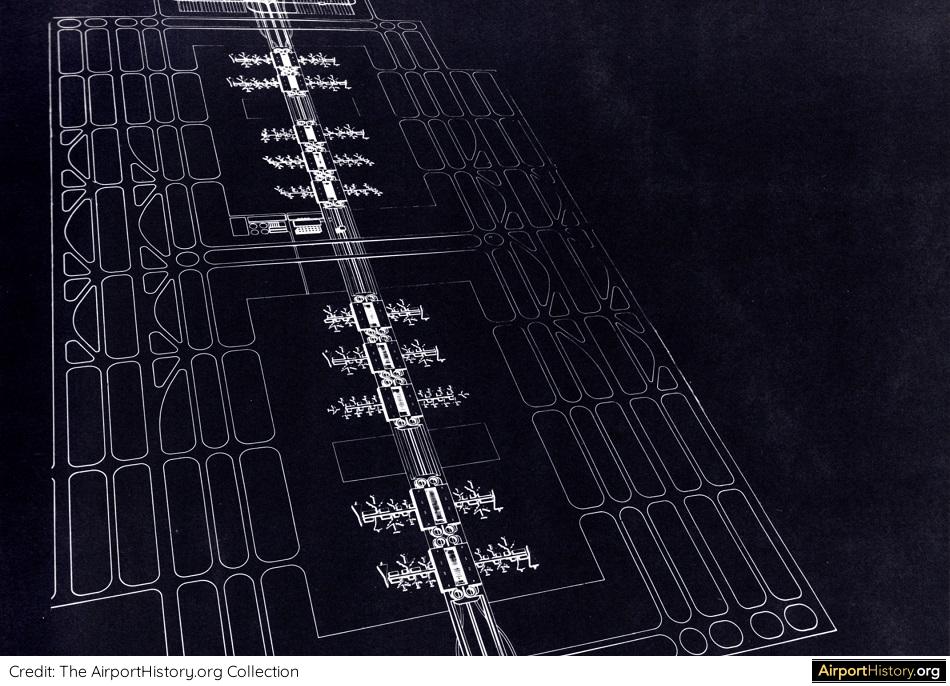
An artist's impression of the original master plan for the new Dallas/Fort Worth Regional Airport. In a way, the plan can be seen as an optimized version of New York Kennedy's Terminal City but also LAX, with each airline operating its own facilities. Later on, the terminals were changed to a semi-circular shape.
Airlines praised the model. They loved the idea of operating their own airport facilities and the small airport convenience the "mini-terminals" brought.
Thus, the Atlanta architects developed their own version of the DFW plan. They conceived the midfield complex as a series of sixteen terminal units along structural, double-decked roadways of Interstate 85 on the west. The roadways met on the east side and continued at ground level to Interstate 75. Each terminal was self-contained with aircraft gates, ticketing and baggage facilities. The 600-foot (183-meter) central strip was dedicated to roadways and parking garages. A people mover system ran through the upper level of each terminal, parallel to the roadways. Other features included a hotel and an automated sorting system for mail and baggage.
SLIPPING TIMELINE: A BLESSING IN DISGUISE
Initially the completion date for the new midfield expansion was 1972. However, the timetable slipped by years due to airline politics, economic downturns, financing issues as well as discussions about a second airport. This had a major advantage: there was ample time to adjust and fine-tune the design for the midfield complex. By 1971 the original design was still more or less intact. However, the central area had been reduced from 600 to 200 feet and the people mover was no longer elevated. The layout was very much tailored to Atlanta's "O&D" (origin and destination) passengers. However, at the time 70% of passengers changed flights at the airport. With the proposed design, most transfer passengers would have to change terminals in order to catch their onward flight. Even cities that had large volumes of connecting passengers had never specifically addressed this situation: they had merely adapted standard airport designs. Therefore, no precedent existed from which Atlanta's planners could draw.
A BREAKTHROUGH
In a conceptual breakthrough in 1973, the complex had been split into two distinct sections, airside terminals with aircraft parking gates and landside terminals for ticketing and baggage. Roadways and parking were moved away from the aircraft gates and concentrated around the landside facilities, making the roadway system much simpler, while still creating curb space for hundreds of cars per hour. Although the separation was not considered particularly significant at the time, it marked the point at which the airport veered away from its "drive to the plane" stance and began to deal with the particular requirements of a transfer airport. Originating and terminating passengers would shuttle between the terminals and six airside concourses on a sunken but exposed people mover system, the sole means of transportation within the complex. As ticketing and baggage facilities no longer had to be provided in each airside terminal, more aircraft gates could be added. The elimination of roadways and parking freed additional space.
LAST BUT NOT LEAST
Another major change was to come in the winter of 1975. Due to an ice storm at Dallas/Fort Worth International Airport, the Airtrans people mover system, the ground level people mover that had been a model for Atlanta's planning, became paralyzed. The designers realized that Atlanta's system would be vulnerable under similar conditions. It was a risk that airlines would not accept. Thus, during an intense brainstorming session Delta's facility department recommended covering the "ditch" that contained the people mover system, thereby protecting it from the elements. Putting the people mover underground also removed the barrier between the north and south runway systems and eliminated the need for costly taxiway bridges. Also, the taxiways that in earlier layouts had separated the landside and airside terminals could be eliminated. Next the Delta team recommended that two parallel terminals replace the three landside linear landside buildings. This move, coupled with the removal of the taxiways, allowed the half-concourse to become a full concourse, adding twelve gates.
THE FINAL STEP IN CREATING THE "ATL" WE KNOW TODAY
A final critical step was to divide the people mover tunnel into two chambers and separate them to allow for a pedestrian mall in between. Lastly, the planners re-positioned the terminals from a north-south to an east-west alignment and placed them back to back. The number of concourses was reduced to four domestic concourses boasting 26 gates each, with space to build a fifth concourse. An international concourse was added adjacent to the north terminal.
On April 18th, 1977, the contracts for construction of the terminal building and the people mover were awarded and construction could begin, almost ten years after the start of the design process. All good things take time!
For this blog the fantastic 1989 book "A Dream Takes Flight" by Betsy Braden & Paul Hagan was a huge inspiration. I highly recommend this book to anyone who wants to know more about the history of Atlanta Airport pre-1990.
We hope you enjoyed this little piece of history on the development of Atlanta's Midfield Terminal. In the future we are also planning a full multi-part history on the development of Atlanta Hartsfield-Jackson Airport. Sign up below to know when new content is released!
More airport articles: Click here
Want more stunning airport photos & stories?
Sign up to our newsletter below to know when new content goes online!
ACKNOWLEDGEMENTS
I want to give a special thanks to Marie Force of the Delta Flight Museum for her assistance in preparing this article. ALL GOOD THINGS TAKE TIME In democracies, development of big infrastructure projects can take decades. This especially applies to airports, which have a huge impact beyond their perimeter. For example, Amsterdam Schiphol's newest runway opened in 2003, 35 years after it first appeared in planning documents. London Heathrow's third runway takes the cake however. Did you know that plans to construct new runways north of Heathrow date back all the way to 1946? NINE RUNWAYS According to the airport's original development plan, initially Heathrow would boast six runways laid out in a Star-of-David pattern: two main east-west runways, which could handle the heaviest aircraft of the time, along with four shorter diagonal runways. Passenger terminals were to be located in the middle of the field in order to optimize aircraft taxiing times to and from the runways. In a second development phase, a further three runways in a triangular pattern would be built north of Bath Road, bringing the total to nine runways! The expansion would have necessitated the demolition of the two nearby villages of Harlington and Sipson. The Illustrated London News article mentioned that: "This work will not be undertaken before 1950 in order to... give ample warning to the householders concerned." The first six runways as well as the central terminal area were built as planned. The northward expansion, however, was thought to be costly and unnecessary, and plans were shelved. FROM SIX RUNWAYS TO TWO Due the expansion of the central terminal area, as well as the new generation of jets needing longer runways, three of Heathrow's four diagonal runways had been closed by the 1970s, leaving Heathrow with three runways. The last remaining diagonal runway, runway 5/23, was decommissioned in 2003, leaving Heathrow with its current two runways. Discussions about the construction of a third parallel runway resurfaced again in the 1980s. Between 1990 and 2015, three major studies were undertaken, all of which concluded that a third runway at Heathrow afforded the greatest benefits. THE THIRD RUNWAY IS FINALLY COMING...OR NOT? In 2018, the UK House of Commons voted in favor of the expansion, after which a public consultation started. According to the planning, the third runway would open in 2026, 80 years after it was first conceived! However, in February 2020, plans were blocked by an appeals court on environmental grounds. At the time of writing, the project could face many more years of delays, and with climate change now becoming a political priority, there is a chance that the scheme will be cancelled altogether. You can read many more details about Heathrow's history in the book Heathrow Airport 70 years and Counting, written by aviation journalist Kevan James. You can find more analysis on the recent court decision his website KJM Today. What are your thoughts about London's third runway project? Let us know in the comments below! More airport articles: Click here AMSTERDAM SCHIPHOL IN THE MID-1980S As the aviation community celebrates the 100th anniversary of KLM, AirportHistory.org is preparing a detailed history on Schiphol Airport, which actually predates KLM by more than three years! To get in the mood, I wanted to share this amazing illustration below of Amsterdam Schiphol Airport in the mid-1980s. When I was a kid, I used to have this image as a huge poster. I was so happy to find it back during one of my recent archival digs! It shows the Schiphol that I knew as a kid: state-of-the-art, small and convenient! Since then, the terminal has doubled in size and several new concourses have been built and existing ones extended. Have a close look at the details of the photo. The round structure adjacent to the terminal (center of image) is the "old" railway station. Opened in 1978, the station was torn down after only 15 years and rebuilt into the "Schiphol Plaza" complex we know today. Can some of you still remember the tunnel connecting the railway station to the terminal? Note the open parking lot on the right, which is now a huge multi-level parking structure with offices built on top. Also note the still-empty polder landscape south of the airport. The motorway running through it used to offer expansive views of the beautiful Dutch skies. Nowadays, the polder is cluttered with office parks, housing developments, infrastructure and--in the finest tradition--huge windmills! Foreign visitors in the image include 747s of Braniff, CP Air, Singapore Airlines and Qantas, as well as DC-10s of Malaysian Airline System and Finnair, as well as a DC-8 from Surinam Airways. Surinam is one of Holland's former colonies. Interestingly, you'll see planes are parked parallel to the concourse as well as nose-in. Indeed, for a number of years, Schiphol used a combination of the two, with newly built wide-body gates in the 1970s being nose-in positions. Gates for smaller aircraft were converted in the mid-1980s. SOMETHING IS NOT QUITE RIGHT I'm sure that readers familiar with Schiphol have already noticed that something about this illustration is "off" and that's what makes it so unique: Pier E, the second concourse from the right (then called Pier C) has been expanded with a "Y-shaped" structure, similar to the other piers. Indeed, this was originally the plan. But in the early 1980s, it was decided to completely rebuild Pier E, with the design departing from this "Y" shape. See below for how it turned out. From this interesting deviation and the visiting aircraft, I gather that the drawing dates back to the early 1980s or even late 1970s. I have been unable to properly identify the artist who made this drawing. Only his given name "Hubert" is visible on the edge of the drawing. Can one of our readers perhaps help? Hope you enjoyed! This was just a snapshot of Schiphol's history but we are working on a muti-part history as well as several photo specials.
Did you notice other interesting things about this illustration? Please share your thoughts below ↓ |
With a title inspired by the setting of the iconic 70s film "Airport", this blog is the ultimate destination for airport history fans.
Categories
All
About me
Marnix (Max) Groot Founder of AirportHistory.org. Max is an airport development expert and historian. |









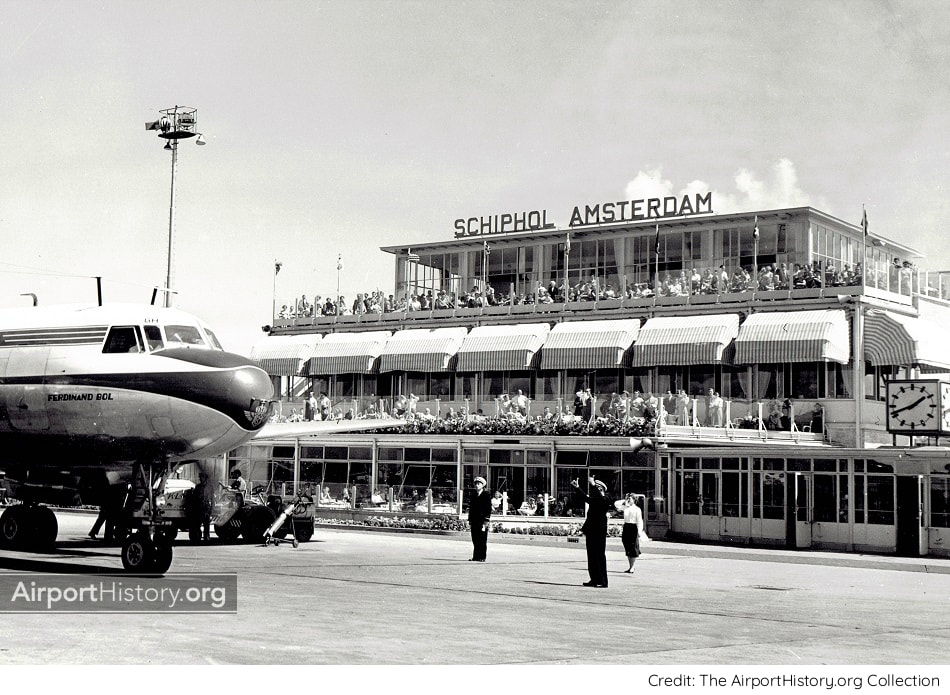





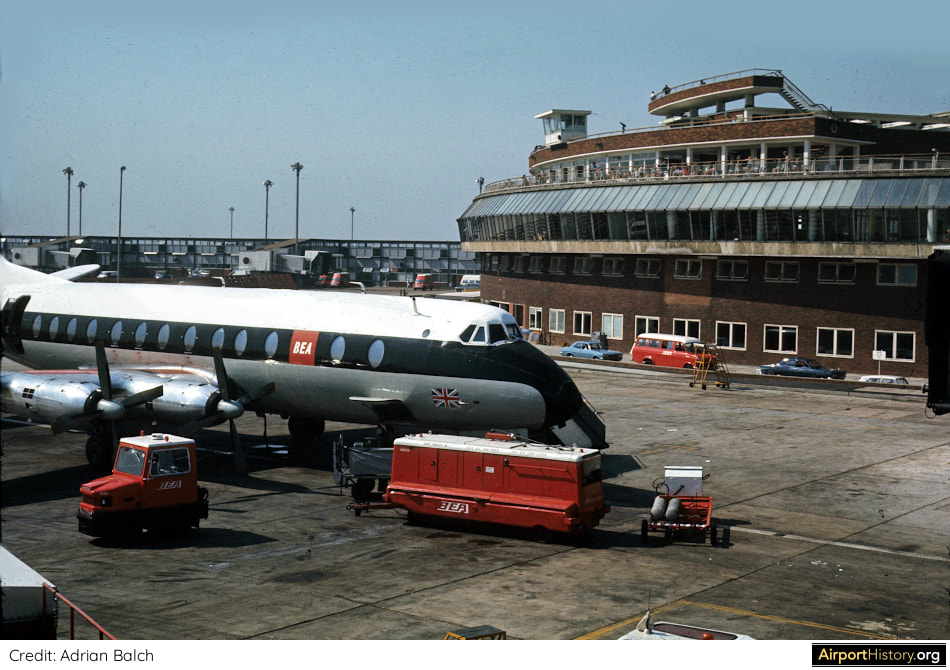

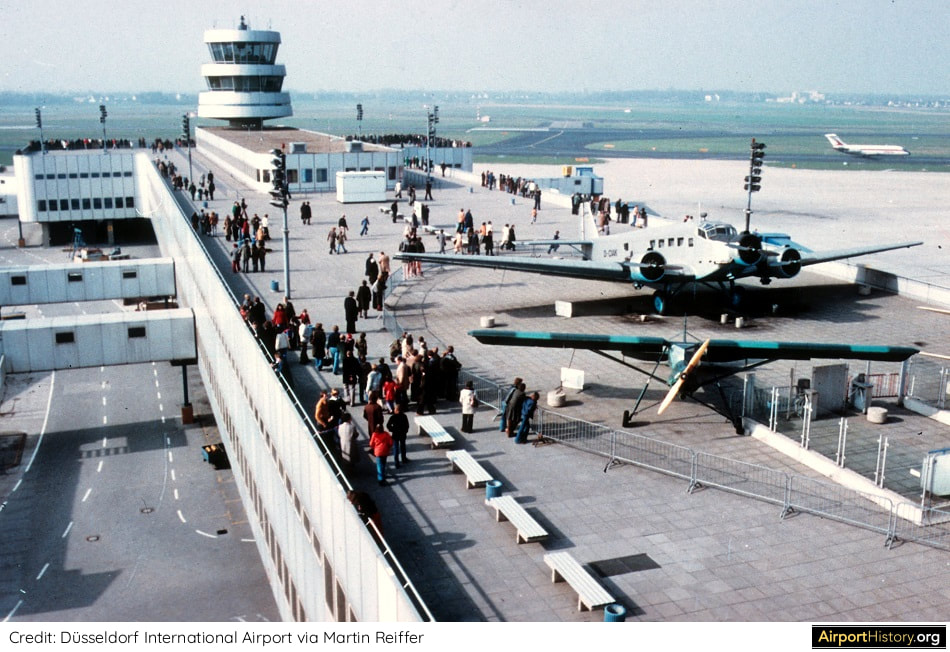


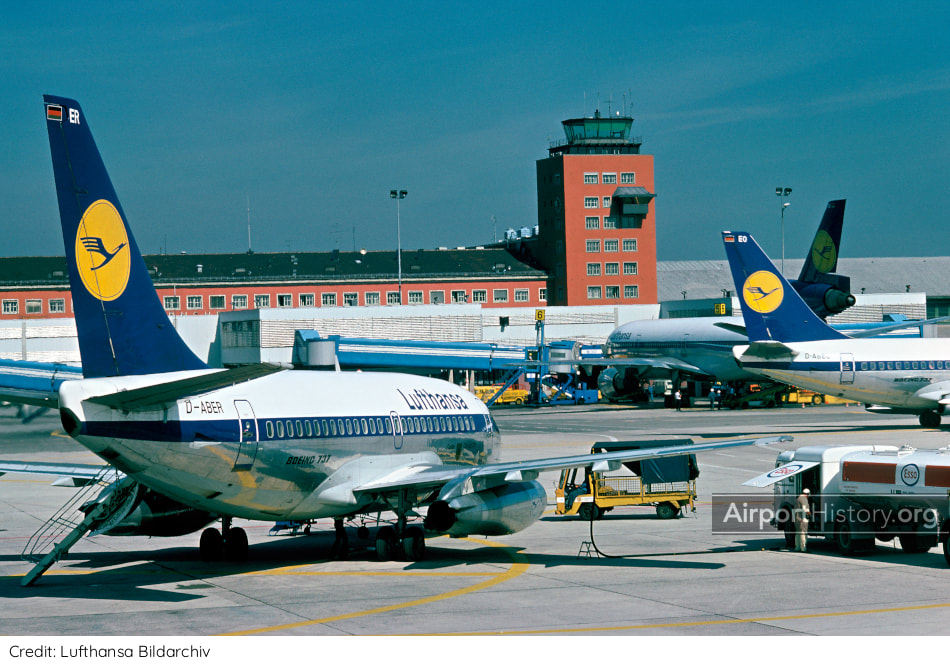









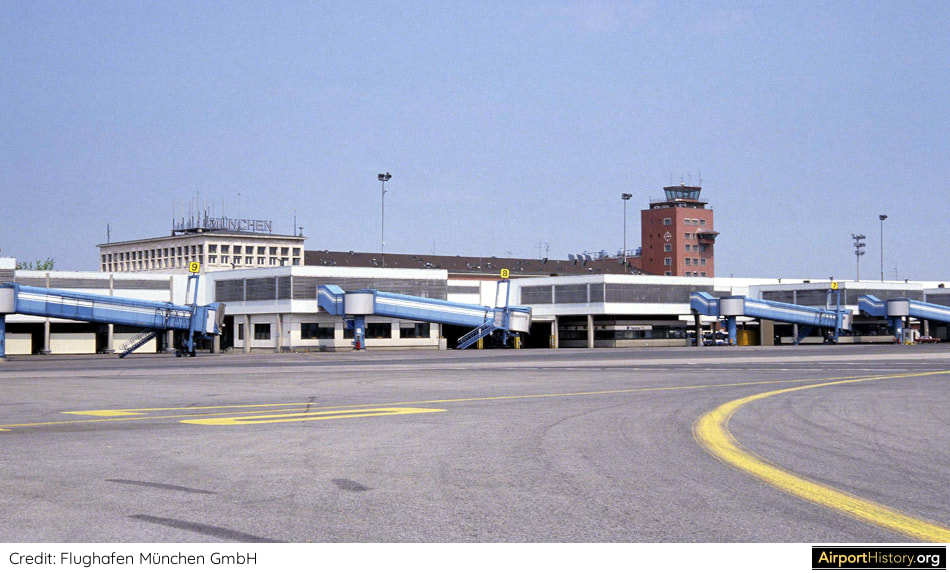










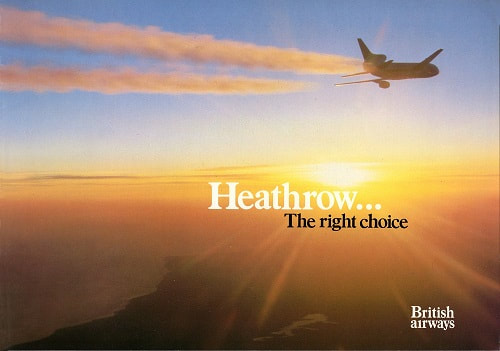

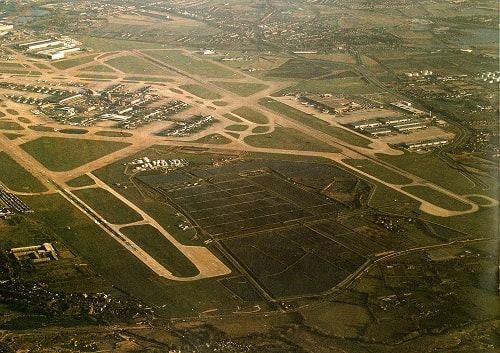




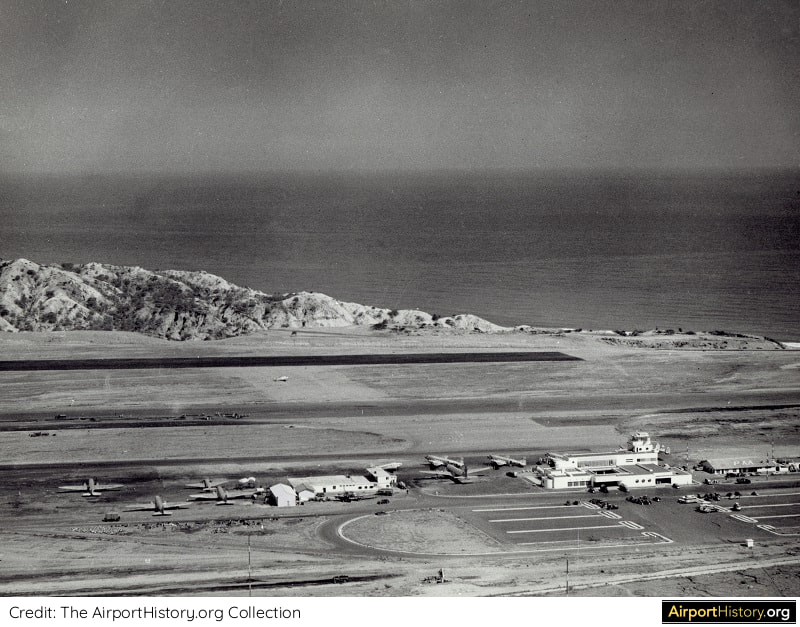


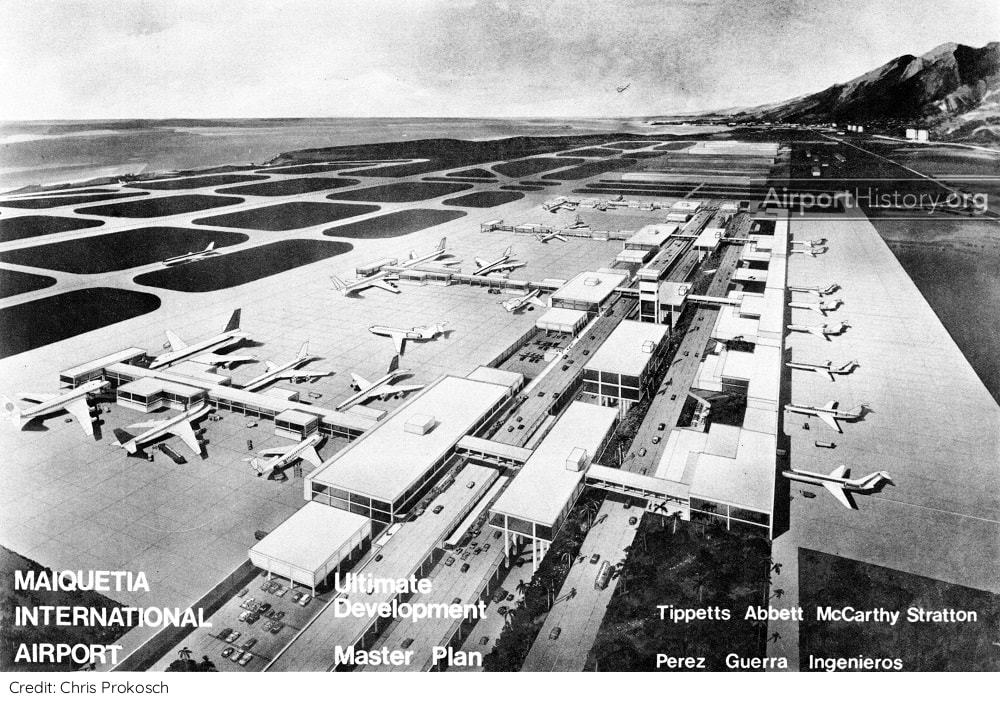










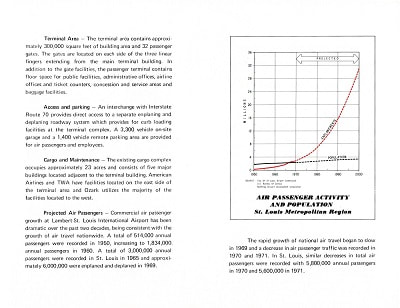


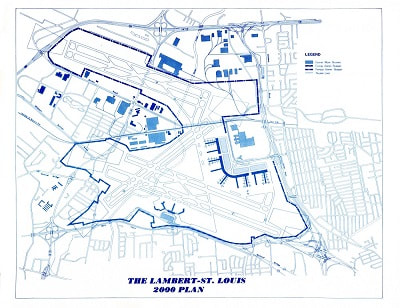




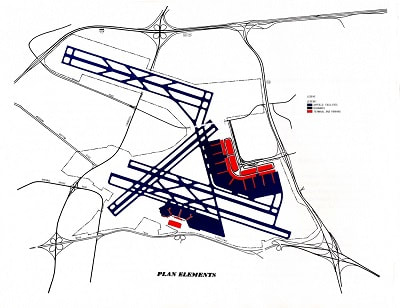




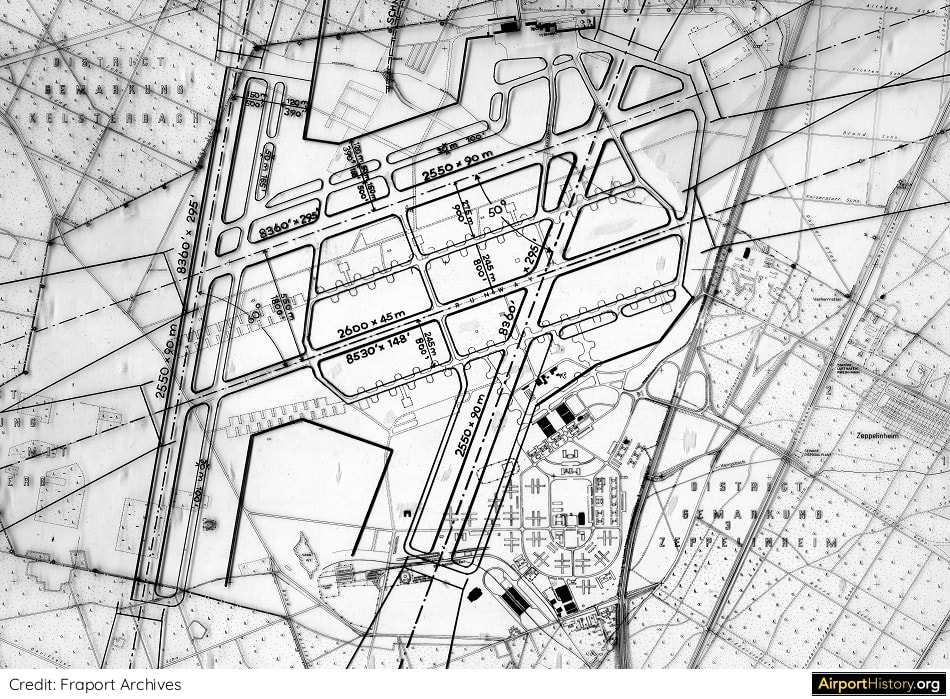
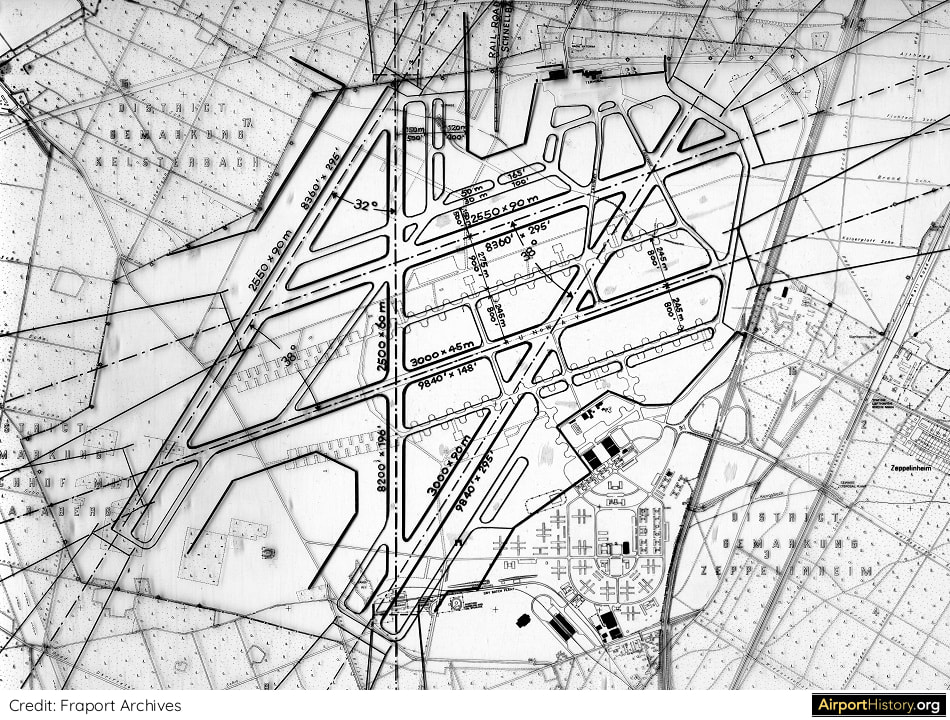




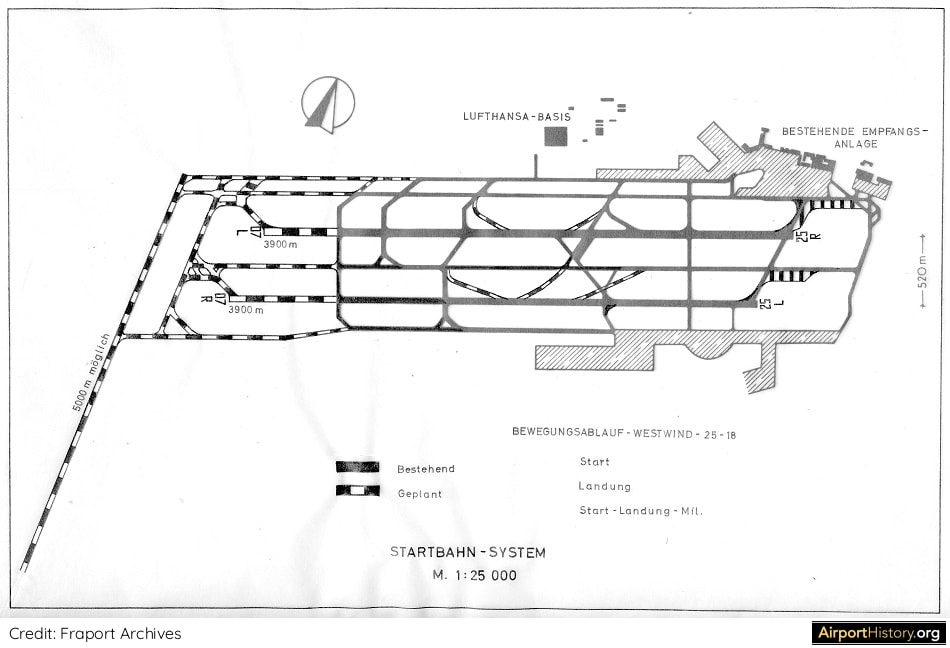




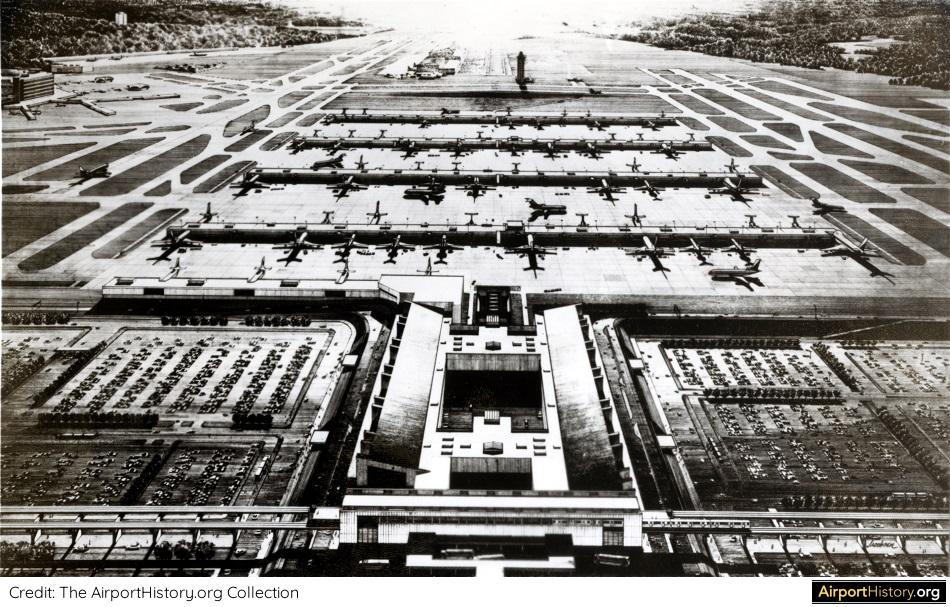







 RSS Feed
RSS Feed